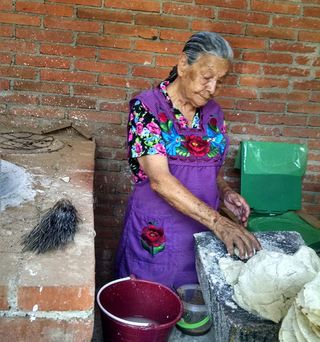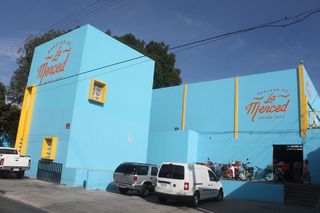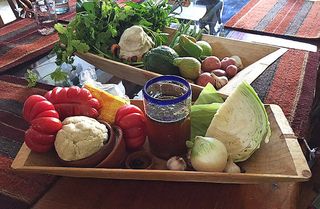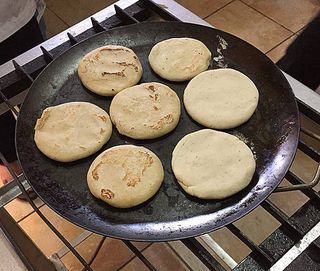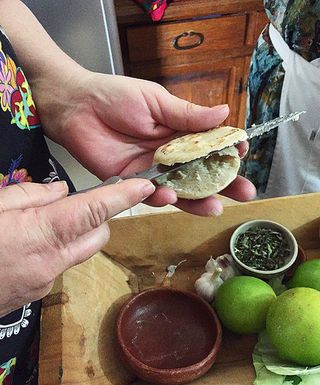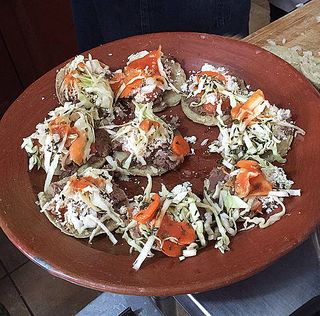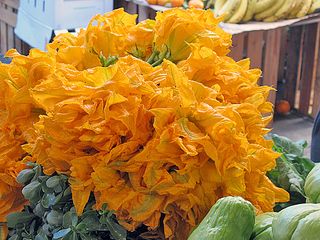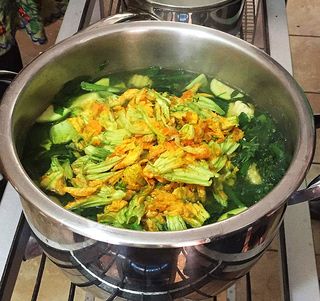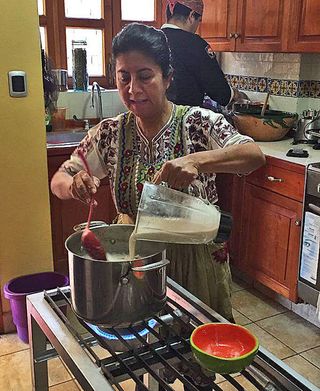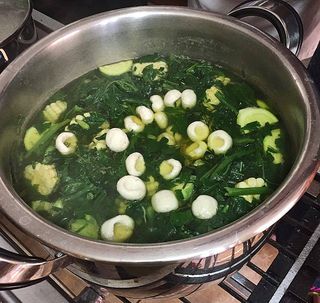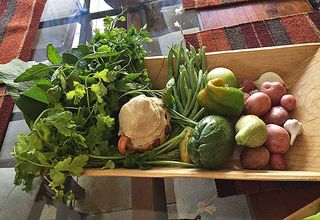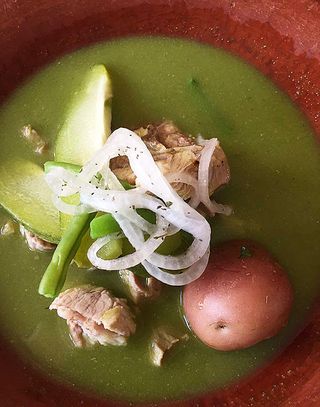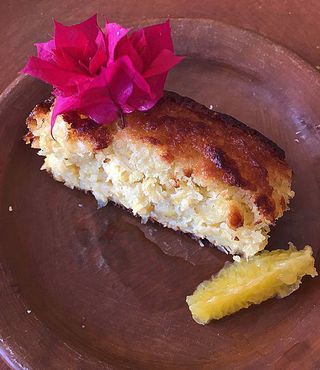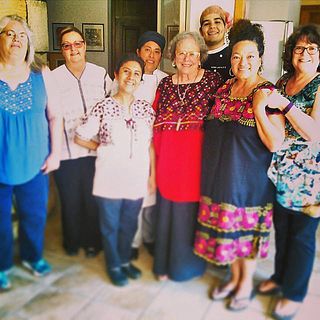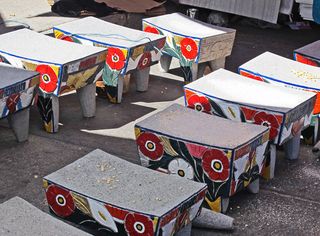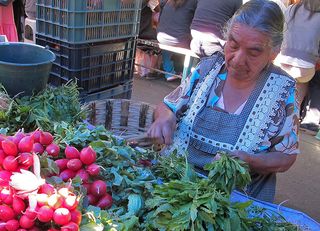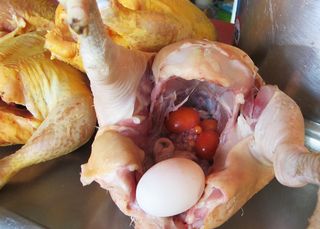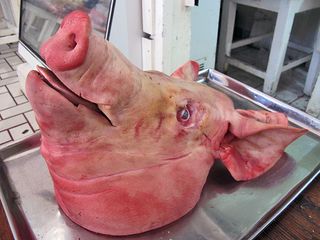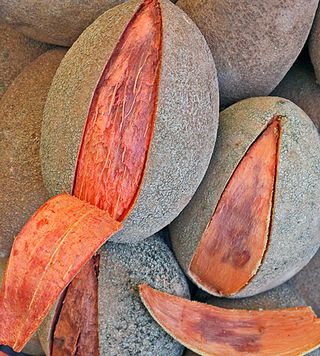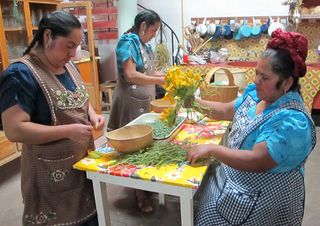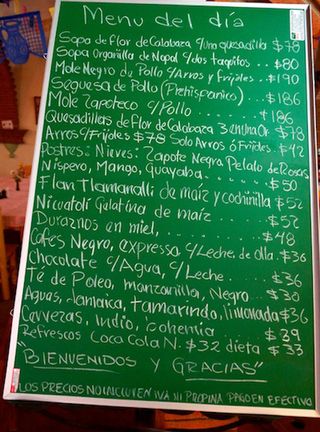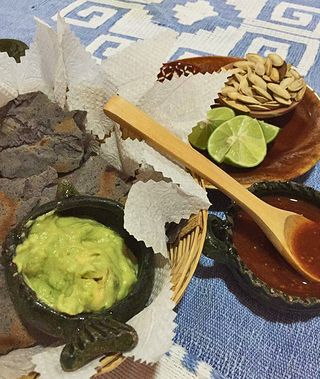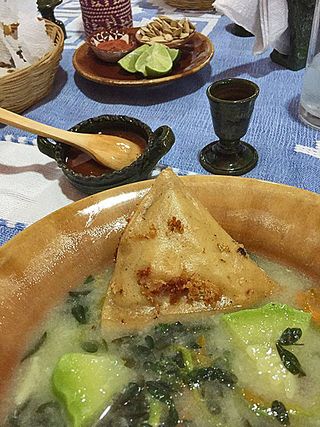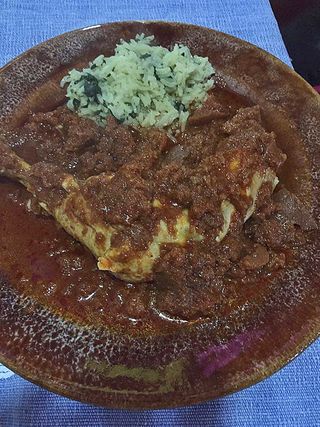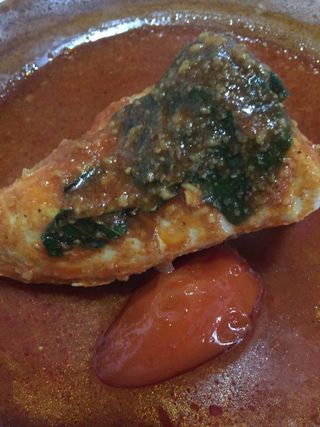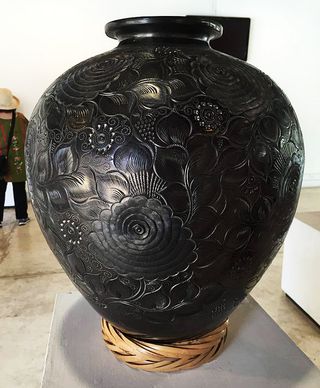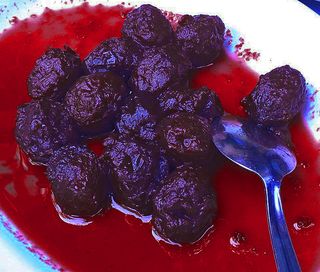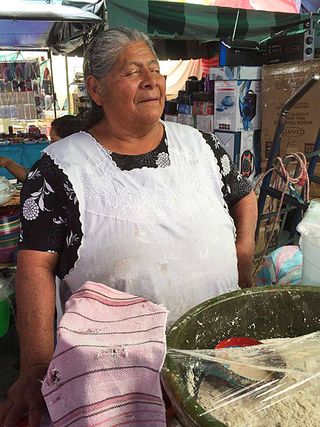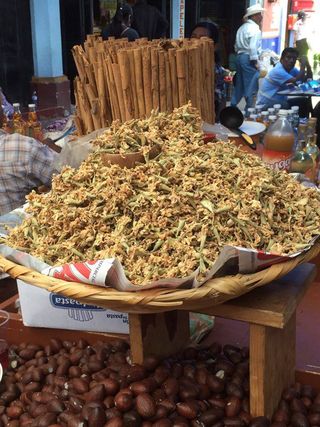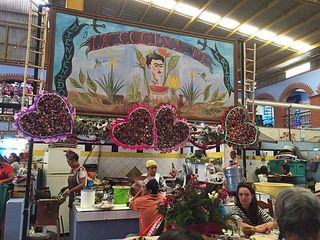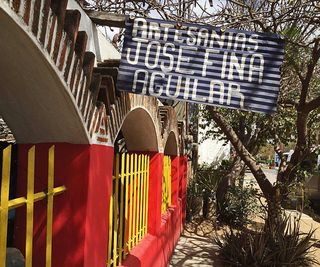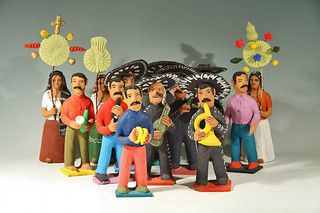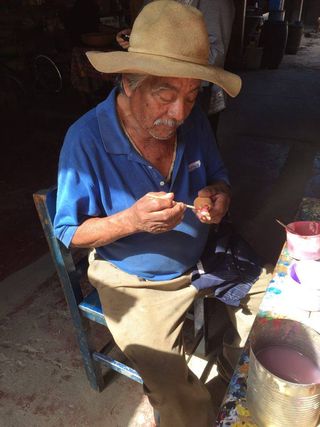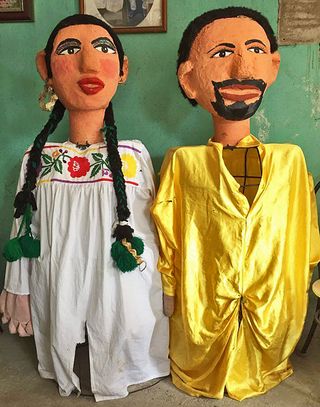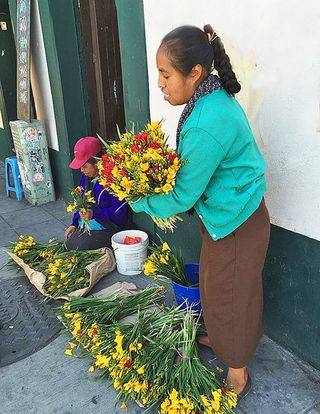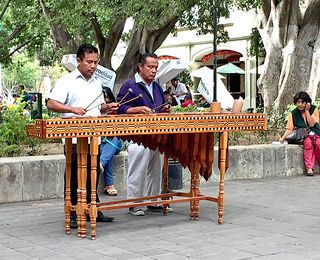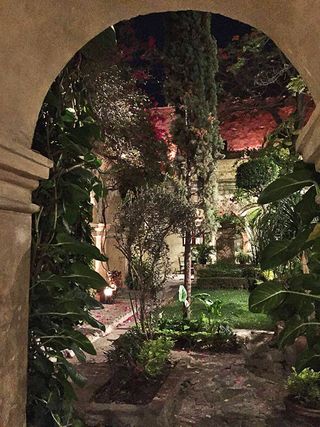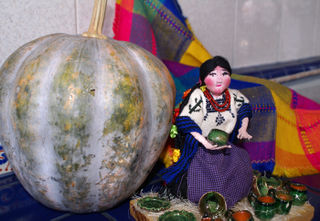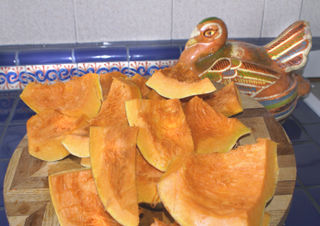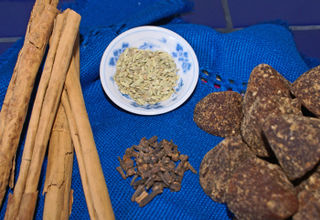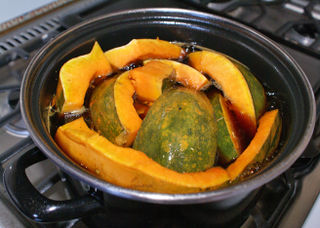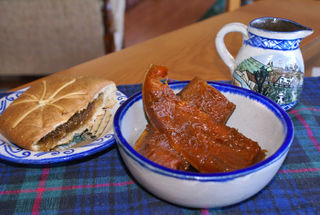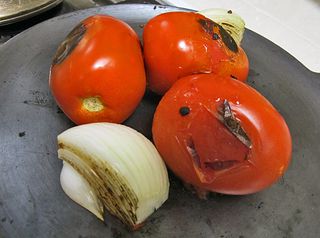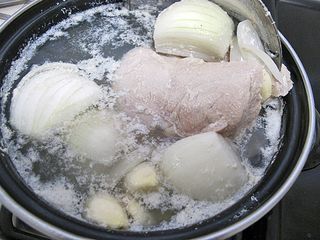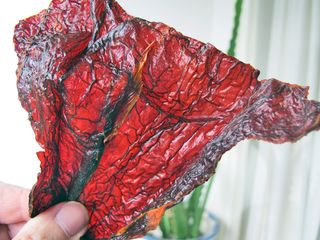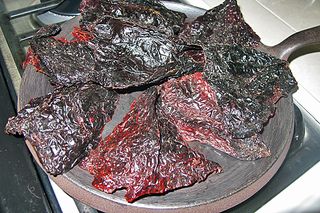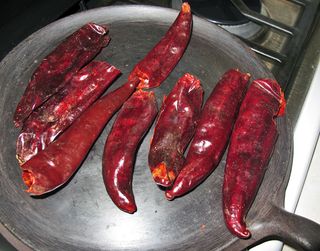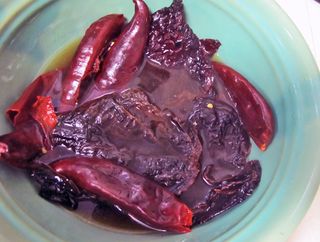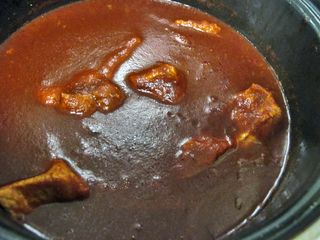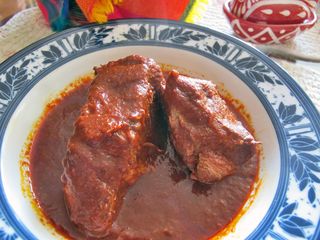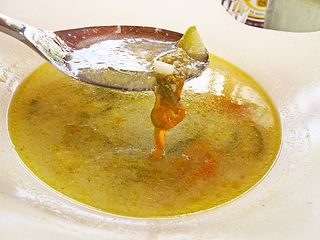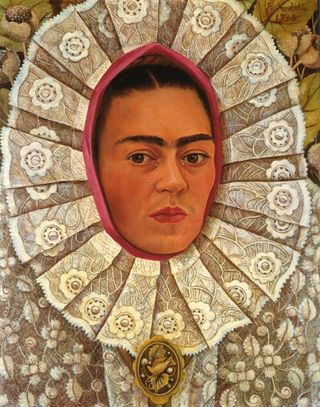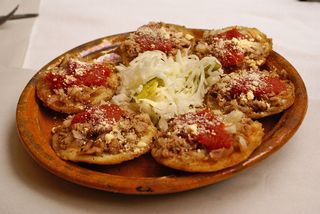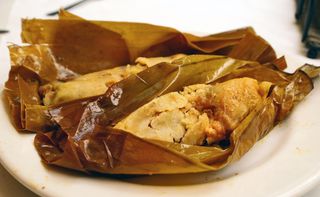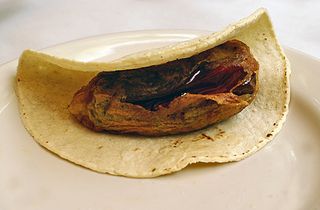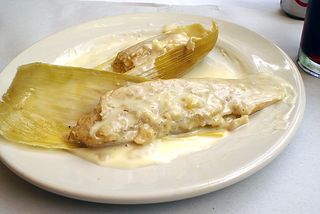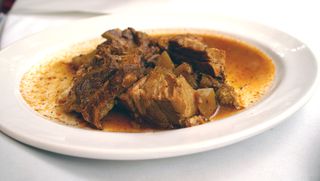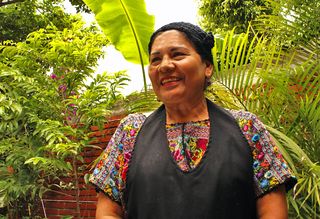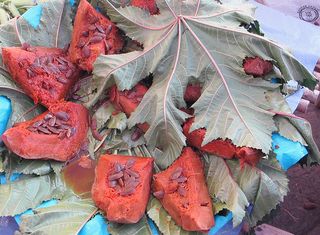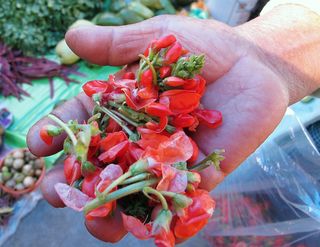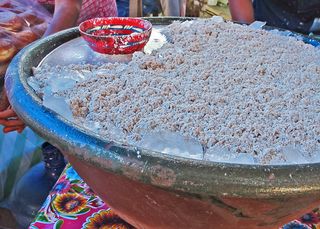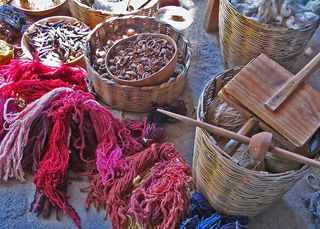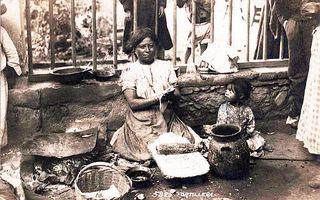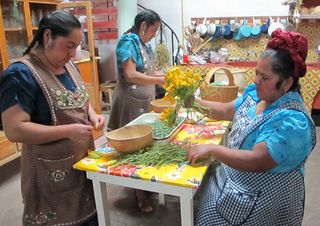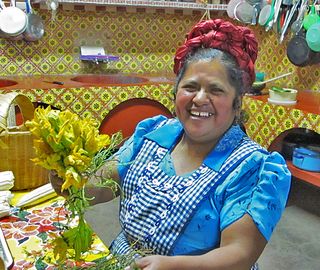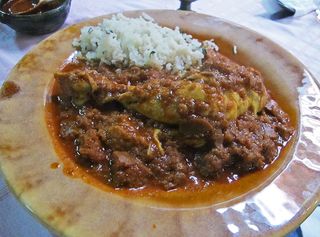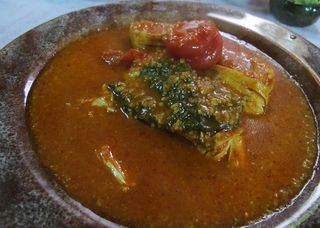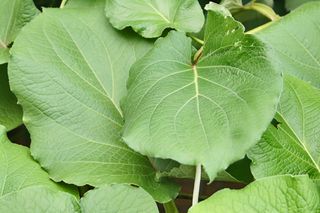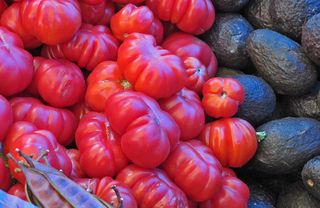
Chef Fernando Martínez Zavala, in charge at Restaurante Yuban. Chef Fernando has headed up the kitchen at Yuban for about two years; he's made changes in both the space and the menu that have brought the restaurant to the forefront in Mexico City's mid-to-high-end places to dine. Photo courtesy Yuban.
It's part of my job description–self-described, this job–to write about restaurants. For the first time in nine-plus years, I'm writing a second review of a place I've wanted to love without reserve but needed to revisit several times to be able say, "Yes, absolutely, this is the place to go." Before you read further today, you might like to take a look at the first article from Mexico Cooks! about Restaurante Yuban, from July of 2015: Restaurante Yuban. You will see that although I loved much about what I ate there, I still had some questions and suggestions.
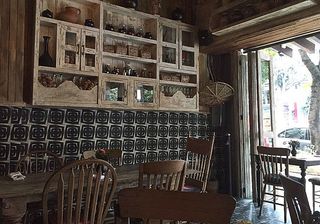
The first thing I noticed this visit, in April 2016, is Yuban's very recent interior renovation. The remodel is seamless, opening up both dining and bar space without sacrificing the cozy ambience that everyone has loved about the rooms since Yuban first popped up on Mexico City's restaurant radar. This new section at the front of the restaurant is now open to lovely light and air. Click on any photo for a larger view.

The bar, with its full complement of spirits, is now integrated into one side of the front dining room, making a wonderfully open space whether you're at Yuban to have a drink with a friend or to share a full meal with your friends, family, or a group.

I've always loved the floor tiles at Yuban and was so delighted to see that they haven't been changed. Remodel and floor tiles aside, the food! The service! What about them? The menu and the service have been remodeled as well, keeping the best and seriously improving the rest. Restaurante Yuban has graduated to full star status in Mexico City.
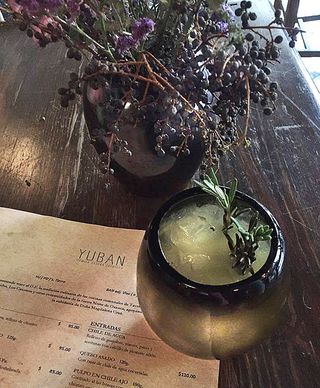
Of the various cocktails on the Yuban menu, this one–chagua de la reina–caught my attention initially because it is made with mezcal, a drink endemic to Oaxaca and currently the go-to liquor in Mexico City. Mezcal is also Mexico Cooks!' preferred drink, although I rarely drink alcohol. The chagua (according to chef Fernando, the word refers to someone who produces a lot of super-spicy chile de agua) is made of an infusion of chile de agua, jugo de limón (juice of native limón–you might know the fruit as Key lime), ginger, and mezcal. The drink's flavors explode in one's mouth and made me, at least, crave a second taste and then a second cocktail. I can't think when I've gone bonkers for an adult beverage, but yowzah–the chagua de la reina won my heart. Move over, straight up mezcal.

Oaxaca's chile de agua, the fiery heart and soul of the chagua de la reina.
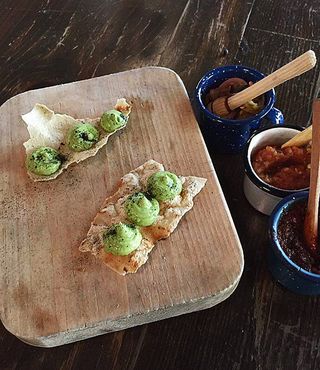
Lovely bits of tlayuda (a large toasted corn tortilla, an icon of the Oaxaca Central Valley) with avocado and ash accompanied our drinks as a house courtesy.
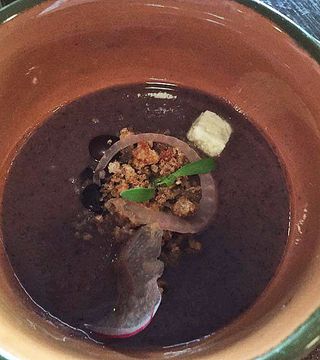
As we chatted and drank, our server also presented us with frijoles de la olla estilo oaxaqueño (Oaxaca-style pot-cooked beans) seasoned with hoja santa (an anise-flavored leaf), radish, pickled onions, queso fresco (tender fresh cheese), chicharrón (fried pork skin), and cilantro sprouts. Both the tlayuda and the frijoles did what appetizers are meant to do: wake up one's appetite for what's to follow.
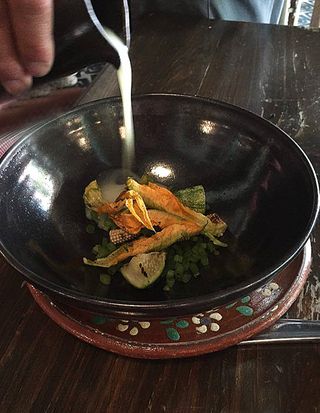
My dining companion and I each ordered Yuban's sopa de guías, she for love and I for comparison with the sopa de guías I learned from Celia Florián in Oaxaca. This sopa, served using the restaurant's elegant upscale pour, looked and tasted almost identical to the one I helped prepare in Oaxaca. The chochoyotes (tender corn dumplings with a dimple) were delicious! On a scale of 1 to 10, definitely a ten!
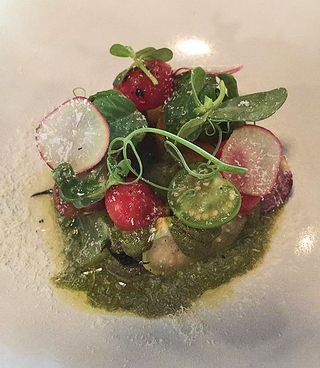
My companion ordered ensalada de siete jitomates criollos con queso fresco y pesto de hoja santa (salad of seven native tomatoes, transparently thin radish slices, fresh cheese, and hoja santa pesto). These tiny native tomato halves, dressed with a just-right anise-y pesto, seemed like no big deal on the plate: pretty as a picture, but with a salad-bored shrug. One taste and I wished I'd ordered my own plateful of pure ripe tomato, wonderful pesto, and all the rest of the flavors that combine to make this small dish a huge hit. I could cheerfully have licked the plate.
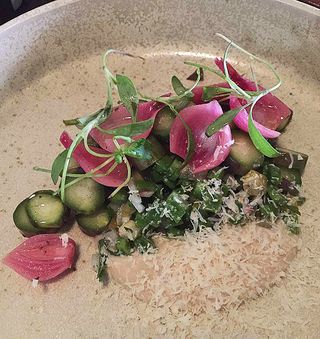
A second marvelous and beautiful salad, this time of roasted asparagus, roasted nopales (cactus paddles), pickled onions, and a turnip cream. The smokiness of the roasted vegetables was the perfect complement to the mezcal we drank.
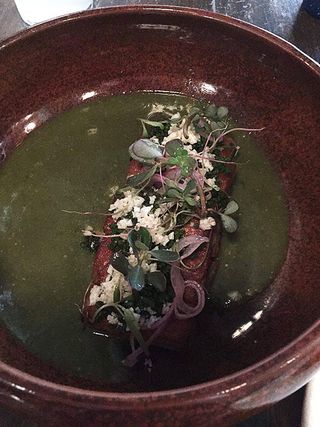
After listening to me wax ecstatic about the marvelous mole verde (green mole) from February's Oaxaca cooking class, my companion was happy to find the dish listed on Yuban's menu. She wasn't disappointed; the carne de cerdo (pork meat) was fork-tender and the mole, served with a generous spoonful of alubias (small white beans) was all but identical to the mole verde our cooking class prepared in Oaxaca.
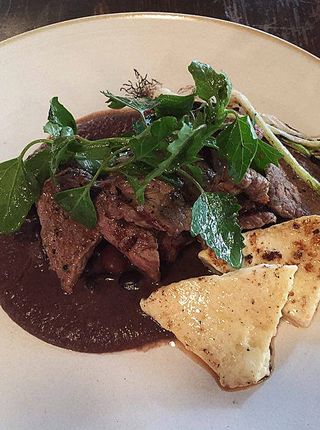
Tasajo, a Oaxaca-style thinly cut beef topped with quelites cenizo (a kind of greens), tender as served on a pool of black beans, with grilled cebollitas cambray de la sierra (knob onions from the hills) and grilled cheese. House-made tortillas were just right for mopping the plate.
Mole negro con pechuga de guajolote (black mole with turkey breast), served with a small pot of delicious, perfectly cooked rice.
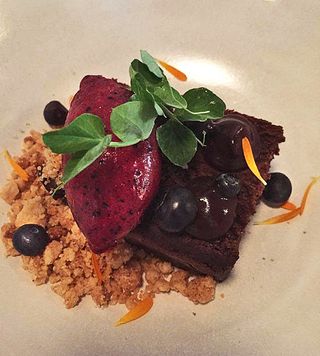
We tried two of Yuban's three desserts. This one is pastel de chocolate oaxaqueño (Oaxacan chocolate cake) with house-made sorbet, blueberries, and a streusel crumble. Marvelous.
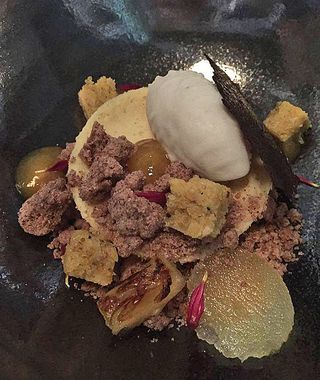
A companion ordered cremoso de requesón (creamy sweetened cheese similar to ricotta) with streusel de pinole (slightly sweetened toasted, ground corn), piña rostizada (roast pineapple), and coconut ice cream. I give it two–no, three–thumbs up.
When you're in Mexico City but craving the authentic taste of Oaxaca, Restaurante Yuban is definitely your best option. Don't take my word for it, though: go, and enjoy the best of Oaxaca outside Oaxaca itself. And by all means order a chagua de la reina and raise a glass to me.
Provecho! (Say Bon appetit! in Spanish.)
Restaurante Yuban
Calle Colima 268
Near the corner with Insurgentes
Col. Roma Norte
Hours:
Monday through Wednesday 13:30-23:00PM
Thursday through Saturday 13:30-1:00AM
Sunday 13:30-18:00PM
Tel. 6387 0358
Reservations strongly suggested
Looking for a tailored-to-your-interests specialized tour in Mexico? Click here: Tours.

